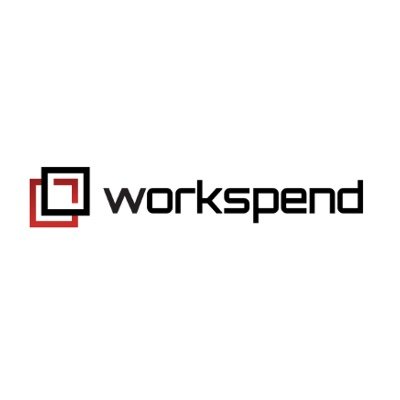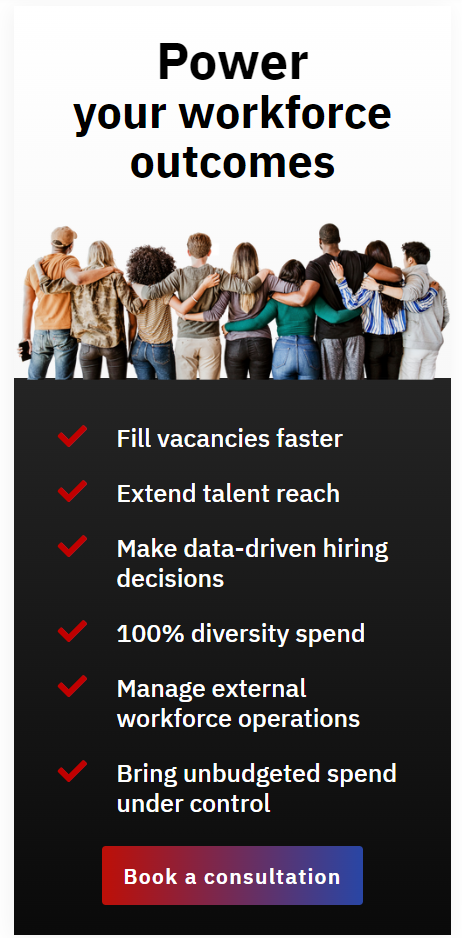Published : April 4th 2025
How to Define and Choose the Right MSP Service Offerings for Your Business
Thinking about a Managed Service Provider (MSP)? It’s a single partner that tackles your contingent workforce, manages staffing vendors, and gets the right people into the right roles. If you’re new to this model, it’s easy to feel lost figuring out what to include. Do you just handle vendor management, or explore things like direct sourcing and statement-of-work oversight?
This article breaks down the core MSP service offerings a first-timer should consider, from basic vendor coordination to more advanced options. We’ll also look at MSP best practices for picking a scope that aligns with your organization’s goals, so you don’t overdo it or undersell what an MSP can do. The right mix sets you up for success now while leaving room for scaling MSP operations as your needs grow.
Understanding the MSP Scope for First-Time Programs
A first-timw MSP program usually marks the jump from a patchwork of vendors and manual processes to a more cohesive, streamlined approach. You’re letting an external partner handle a wide array of contingent workforce solutions, so the services you decide to include can shape everything from initial costs to user satisfaction. Going too broad might lead to an unwieldy launch; going too narrow might not give you the results you want.
That’s why understanding and choosing the MSP scope carefully is so important. If an MSP tries to cover every possible service from day one, you risk overextension and frustration. On the other hand, homing in on a well-targeted selection leads to smoother processes, better ROI, and happier stakeholders across the board.
What are the Core MSP Services?
Many organizations get their first taste of MSP value through vendor management. Instead of juggling multiple staffing suppliers, the MSP standardizes performance tracking, billing, and compliance and gives you complete visibility. That alone can deliver quick cost savings and reduce day-to-day oversight hassles.
Compliance and risk management are equally important. The MSP handles worker classifications, wage-and-hour laws, and vendor contracts, preventing legal slip-ups that could hurt your brand. Skimping here is risky, as even minor oversights can lead to big headaches.
Finally, reporting and analytics act as your program’s eyes and ears. Real-time dashboards spotlight spend patterns, time-to-fill data, and compliance flags. This feedback loop helps MSP leaders refine processes, keep clients informed, and follow MSP best practices for transparency and accountability.
In research from CompTIA, over two-thirds of companies reported using outside IT services in the last 12 months, indicating a growing reliance on managed services among organizations.
Specialized or Add-On Services
Once an MSP’s core services are running smoothly, many organizations look at direct sourcing. Here, the MSP taps into your brand to lure potential candidates directly, rather than always going through third-party staffing vendors. That can mean faster fills, lower costs, and better cultural alignment for niche roles—though first-gen MSPs often wait until they’ve nailed down the basics before taking this step.
Another option is Statement of Work (SOW) management, which focuses on project-based roles with clearly defined goals, timelines, and payment terms. It’s a bit more advanced, so not every first-gen MSP tackles SOW oversight right away. But as assignments become more complex, having that capability can tighten project control.
Additionally, some MSPs handle payroll and onboarding, especially if they’re serving as an Employer of Record. Providing a clear onboarding path—and eventually handling offboarding—can significantly streamline the consultant experience, benefiting both your team and the professionals themselves.
Factors to Consider When Defining Your MSP’s Scope
When you’re setting up an MSP for the first time, it’s important to think about which MSP service offerings you want them to manage on your behalf—versus those you’ll keep in-house. If your team doesn’t have much background in advanced areas like direct sourcing or compliance audits, you might prefer the MSP to take the lead there, at least until your own staff grows more familiar with these functions. It also helps to look at your main pain points.
Begin by clearly identifying your core business needs and pain points. For instance, consider if your organization is experiencing challenges such as:
- Talent Acquisition: You may find it difficult to source specialized talent, particularly in fields like IT and engineering, impacting your ability to quickly meet strategic business needs.
- Compliance: If your business operates in heavily regulated industries such as healthcare or finance, navigating compliance requirements and audits can become increasingly complex and resource-intensive.
- Vendor Management: When dealing with multiple staffing vendors, inefficiencies often arise, resulting in duplicated efforts, lack of coordination, or ineffective communication.
- Cost Control: Managing contingent workforce expenses can be difficult, leading to budget overruns or unpredictable spending, making financial planning challenging.
- Reporting and Analytics: Without robust reporting and analytics, you may lack the necessary visibility and data-driven insights required to make informed staffing and workforce decisions.
Alongside these considerations, ask how the MSP will specifically support your strategic business goals. Next, carefully assess your internal capabilities. Evaluate your team’s existing skills to identify gaps and consider the availability of internal resources—such as time, budget, and personnel. Clearly defining these internal strengths and limitations will help you establish the appropriate scope of MSP services.
Potential service areas you might want the MSP to cover include vendor management, talent acquisition, compliance management, reporting and analytics, payroll and billing, and technology implementation. Clearly determining the services to outsource versus those managed internally helps streamline your operations and drives efficiency.
Finally, remember that you can always start with a leaner model and expand later. Many first-timers pick a few core services to begin with—like vendor management or basic reporting—and then add on specialized offerings once the MSP proves its value and everyone’s more comfortable.
Balancing Cost, Compliance, and Quality
Every service you add—be it direct sourcing, SOW oversight, or payroll—brings extra costs, like new software licensing or specialized training for your team. That’s why it’s crucial to sketch out your budget early, looking at everything from implementation fees to the ongoing upkeep. Smart automation and carefully chosen platforms can help offset these resource demands without cutting corners.
On the compliance front, adding complex services too quickly can introduce legal or regulatory headaches—especially for first-gen MSPs without the necessary in-house expertise. Overextending can lead to misclassification issues or data-privacy missteps, which can be tough to undo later.
Above all, maintain high standards. While it’s tempting to go for an all-in-one suite of MSP service offerings, trying to do too much can undermine quality—especially when you’re building credibility from scratch. A smaller, well-run set of services usually beats a huge, underdeveloped offering.
Measuring Success & Continuous Improvement
Setting clear metrics is a must for anyone introducing an MSP for the first time. You might start with cost savings, time-to-fill, contractor turnover, and client satisfaction—these data points reveal if your service mix is hitting the mark or falling short. In many first-gen MSPs, leadership relies on these numbers to refine workflows and decide whether it’s time to add or cut certain services.
Of course, numbers aren’t everything. Holding feedback sessions or distributing quick surveys gives clients a chance to share what they find most valuable (and what they don’t). That direct input can offer insights more revealing than raw metrics. Lastly, remember that workforce demands and market trends won’t stand still. Keeping tabs on industry shifts—like new regulations or emerging talent needs—helps you fine-tune your MSP scope as time goes on, ensuring it remains effective and up to date.
Workspend’s MSP Approach
Workspend operates as a contingent workforce MSP, taking on tasks that range from basic staff augmentation to more specialized services like Direct Sourcing, Statement of Work management, and Payroll/EOR solutions. Our model focuses on four key pillars: reducing costs, boosting quality, mitigating risk, and fostering diversity. By scrutinizing vendor markups, applying stringent compliance checks, and championing diverse supplier relationships, we create genuine value for clients who want flexibility without sacrificing accountability.
Rather than sticking to a rigid, transactional model, we see an MSP as a continuous service relationship. Our team remains engaged throughout each assignment’s life cycle, making changes as your needs evolve and new regulations arise. That means you get more than a staffing fix—you gain a forward-thinking partner ready to help you with MSP best practices while scaling MSP operations as your organization evolves.
Conclusion
Defining which MSP service offerings to include in your first-generation program can make or break its impact. Starting with foundational elements—like vendor management or basic compliance—and then introducing advanced services at a pace your team can handle ensures smoother day-to-day operations and protects against budget surprises. By taking the time to align each service with client demands and compliance requirements, you’ll set yourself up for a more efficient rollout and a stronger return on investment.
Before you finalize your list, evaluate what your organization needs most and gauge your internal abilities. If you’re still unsure, Workspend can lend its expertise in crafting the perfect MSP scope to meet your goals. By setting a clear foundation from day one, you enhance your organization’s ROI, build client confidence, and lay the groundwork for sustained success.
Ready to start your MSP journey? Contact Workspend today for a complimentary discovery assessment, let us help identify your specific needs and build a program that truly fits your organization’s needs.
You may also like:
Common Challenges When Setting Up an MSP and How to Overcome Them
Published : March 4th 2025Common Challenges When Setting Up an MSP and How to Overcome Them Finding the right balance of full-time employees and temporary staff is a key strategic goal for many organizations facing rising demands and growing compliance pressures. As...
AI Should Augment Human Intelligence, Not Replace It
Will smart machines replace human workers? How human intelligence can work with artificial intelligence to produce augmented intelligence.
Can an MSP Deliver Workforce Cost Savings? (Spoiler: Yes!)
MSPs offer structured, data-driven ways to cut overhead costs without sacrificing quality or flexibility, tackling everything from consolidation to compliance.
Power your workforce
outcomes with a diversity MSP






